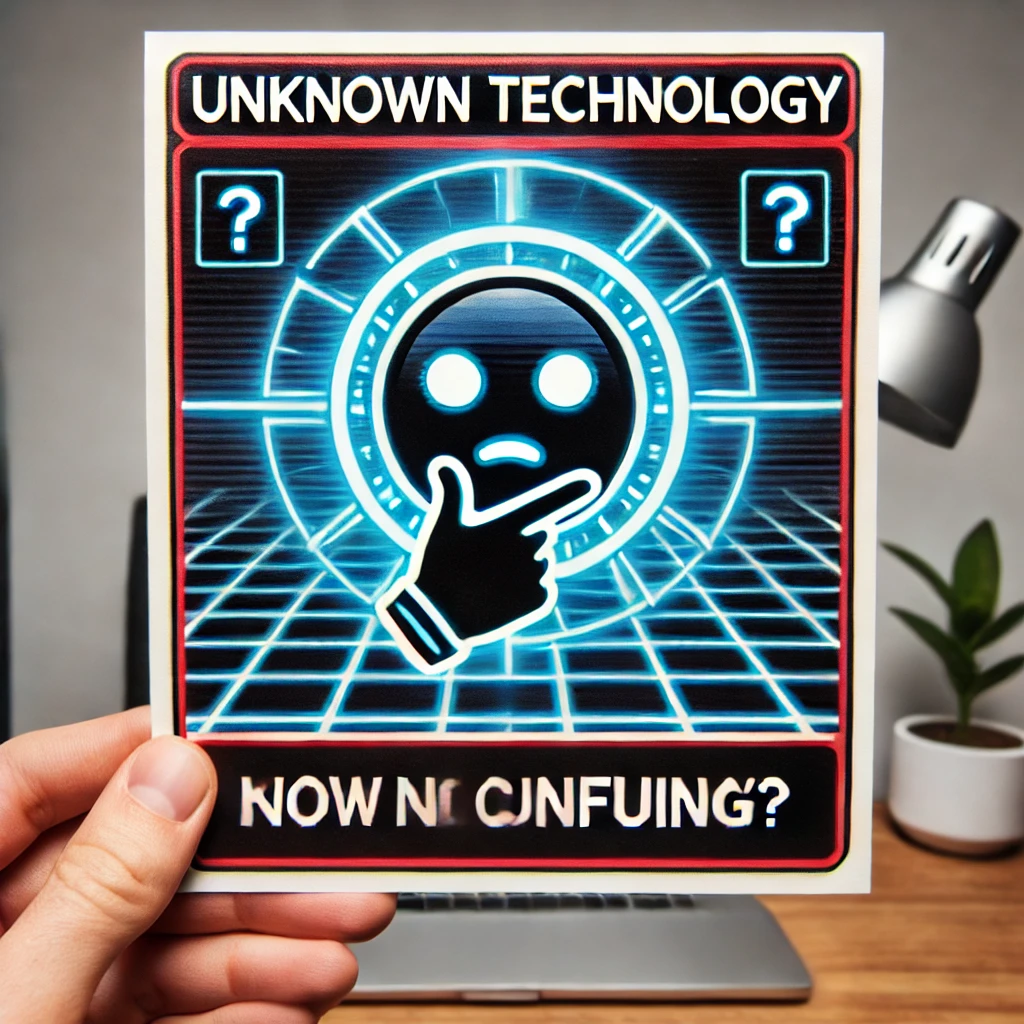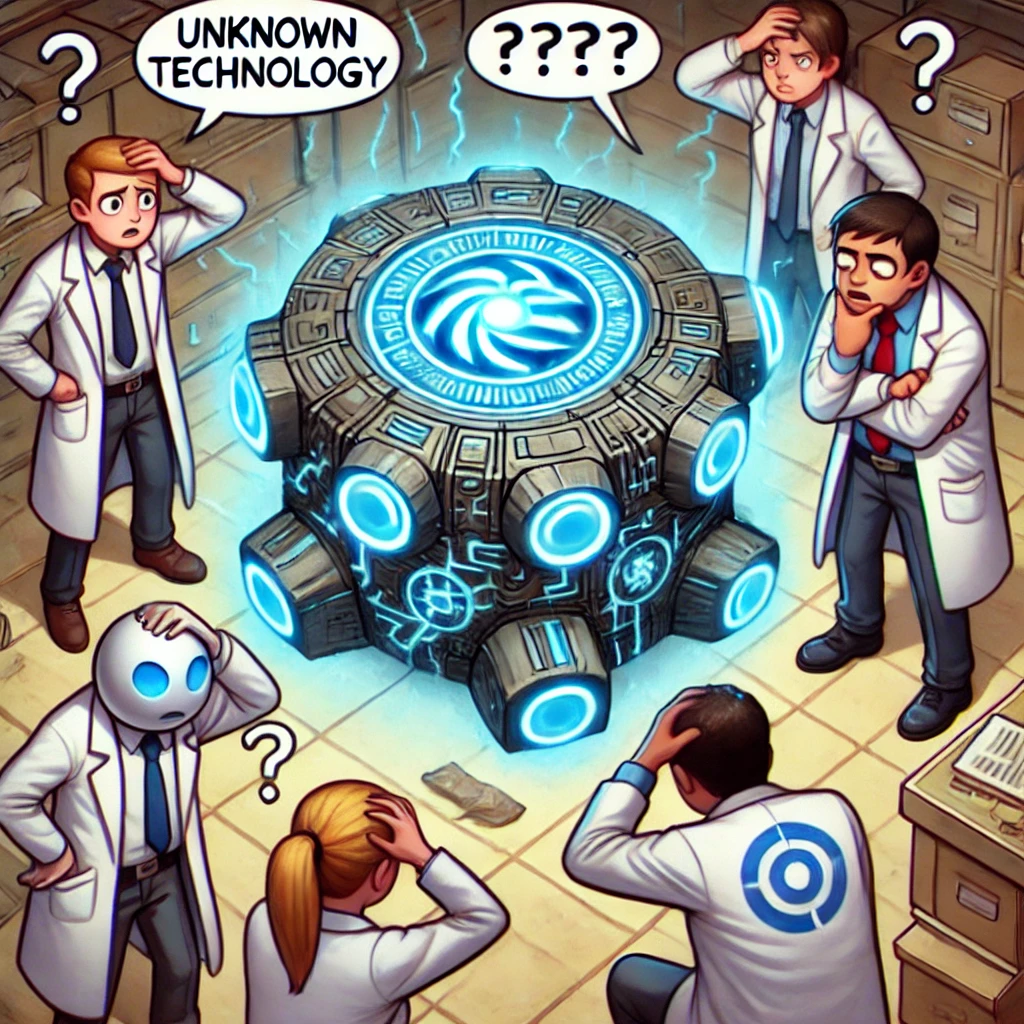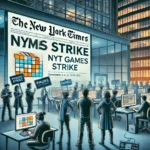Unknown technology Meme Generator
Description

Meme generators have revolutionized digital creativity, allowing users to craft engaging, humorous, and viral content with ease. These tools offer a wide range of features, from pre-designed templates to AI-powered customization, enabling anyone to create memes without advanced graphic design skills. Among the many trending meme formats, the “Unknown Technology” meme has gained popularity for its humorous take on technological confusion and innovation.
In recent years, AI-powered meme generators have enhanced the meme-making experience by suggesting captions, selecting templates, and even creating memes based on user input. These platforms cater to both casual users and businesses, offering social media integration and automation to streamline content creation.
The “Unknown Technology” meme is widely used across platforms like Imgflip, which provides customizable templates and blank meme formats for users to edit. These tools are not just for entertainment; they also serve as effective marketing instruments, cultural commentary tools, and creative expression outlets.
This article explores the top features of modern meme generators, the role of AI in meme creation, specific platforms for “Unknown Technology” memes, and the broader use cases and benefits of meme-making tools. Whether you’re a social media enthusiast, a marketer, or a content creator, understanding these tools can help you leverage memes for engagement, branding, and storytelling.
Meme Generator Features
Meme generators have become essential tools for digital content creation, providing users with an easy and fun way to create viral and engaging memes. To ensure a seamless experience, a good meme generator should include a variety of features that enhance usability, customization, and social media sharing. Below are the key features that define an effective meme generator:
Template Collection
A high-quality meme generator should offer an extensive collection of templates, including both classic and trending meme formats. These templates serve as a foundation for users, allowing them to create memes quickly without needing to start from scratch. Popular templates like “Distracted Boyfriend,” “Drakeposting,” and “Unknown Technology” should be readily available. The inclusion of new and viral templates ensures that users can participate in current meme trends, making their content more relevant and engaging.
User-Friendly Editor
A simple and intuitive interface is crucial for an effective meme generator. A drag-and-drop editing system allows users to position text, images, and other elements easily. The editor should be designed for both beginners and experienced users, eliminating the need for complex design skills. Features such as undo/redo options, alignment guides, and easy layer management can further enhance the user experience, making meme creation a hassle-free process.
Text Customization
The ability to modify text is a fundamental feature of any meme generator. Users should have access to a variety of fonts, sizes, colors, and text styles to personalize their memes. Some tools also offer text effects, such as outlines, shadows, and gradient colors, to make captions more visually appealing. Flexible text placement options allow for better meme composition, ensuring that messages are clear and impactful.
GIF Support
Animated memes are becoming increasingly popular, as they offer a dynamic way to convey humor and messages. Meme generators that support GIF creation enable users to add motion effects, control animation speed, and even combine multiple images into a short animation. The ability to add text overlays on GIFs further enhances their creative potential, making them suitable for social media platforms like Twitter, Instagram, and TikTok.
Social Media Integration
Meme generators should provide easy export and sharing options optimized for different social media platforms. Users should be able to adjust image dimensions, file formats, and resolution settings to ensure compatibility with Instagram, Facebook, Twitter, Reddit, and other platforms. Some generators also offer one-click sharing options, enabling users to instantly post their memes online. This seamless integration enhances user engagement and ensures that memes reach their intended audience quickly.
AI-Powered Suggestions
Advanced meme generators incorporate artificial intelligence to enhance the creative process. AI-powered features can suggest witty captions, recommend the best templates based on the uploaded image, and even generate entire memes automatically. These tools save users time and effort, making meme creation more accessible for those who struggle with coming up with funny or relevant text. AI-based humor analysis can also help tailor meme suggestions to different audiences, increasing their relatability and effectiveness.
Specific Meme Generators
Several online platforms provide users with the tools to create high-quality, engaging memes. These meme generators offer various features, from template libraries to AI-powered automation, catering to both casual users and content creators. Below are two of the most effective meme generators, Imgflip and Canva, each with unique strengths for meme creation.
Imgflip
Imgflip is one of the most popular meme generators, known for its fast, mobile-friendly interface and extensive collection of meme templates. It is particularly useful for creating “Unknown Technology” memes, as well as other trending formats.
Key Features of Imgflip:
- Pre-Designed Templates: Imgflip offers a vast collection of classic and trending meme templates, including popular formats like “Drakeposting,” “Distracted Boyfriend,” and “Unknown Technology.” Users can select a template and customize it with their own text and images.
- Custom Meme Uploads: Users can upload their own images and create unique meme formats, providing flexibility for personalized content.
- Simple Editing Tools: The platform includes an easy-to-use editor with text customization options, such as font styles, color changes, and text positioning. Users can also add stickers and effects.
- GIF and Video Meme Creation: Imgflip supports animated memes, allowing users to generate GIFs with adjustable animation speed, captions, and effects.
- Community Interaction: Imgflip has a built-in meme-sharing community where users can upload their creations, receive votes, and engage with other meme enthusiasts.
- Mobile Compatibility: The platform is optimized for both desktop and mobile users, ensuring smooth meme creation on any device.
Why Choose Imgflip?
For users who want quick meme creation with a focus on trending formats, Imgflip is a go-to choice. Its “Unknown Technology” meme template is readily available, and the platform allows for easy customization without requiring design experience.
Canva
Canva is a more advanced design tool that includes a powerful meme generator. Unlike Imgflip, which focuses primarily on meme-specific templates, Canva offers a comprehensive suite of design tools, making it ideal for users who want greater customization and collaboration options.
Key Features of Canva:
- Extensive Design Library: Canva provides thousands of customizable meme templates, ranging from internet trends to unique original designs. Users can select templates and personalize them with their own images and text.
- Drag-and-Drop Editor: Canva’s intuitive interface allows users to easily drag and drop elements, making meme creation simple for beginners and professionals alike.
- Advanced Text and Graphic Customization: Users can access a wide range of fonts, text effects, stickers, and graphic elements to enhance their memes.
- Collaboration Features: Canva supports real-time collaboration, allowing multiple users to work on the same meme design simultaneously. This is especially useful for marketing teams or social media managers.
- High-Quality Export Options: Canva allows users to download memes in high-resolution formats (PNG, JPG, PDF, and even MP4 for animated memes), making it a great option for professional use.
- Social Media Integration: Users can instantly share their memes on platforms like Instagram, Twitter, and Facebook or schedule posts through Canva’s built-in social media tools.
- AI-Powered Design Assistance: Canva suggests design elements, text placements, and color schemes based on user preferences, making it easier to create aesthetically pleasing memes.
Why Choose Canva?
For users who need professional-quality meme design with advanced editing and team collaboration, Canva is the best choice. Its customization capabilities go beyond simple meme generation, making it ideal for marketers, content creators, and businesses.
Popular Memes Related to Technology

Technology has become an integral part of everyday life, influencing how people communicate, work, and entertain themselves. With this deep integration, tech-related memes have emerged as a humorous way to highlight the quirks, challenges, and absurdities of modern technology. Memes like “Google Knows What You Want Before You Do” and “Stop Trying to Make the Metaverse Happen” reflect the evolving landscape of tech culture and its impact on society.
1. “Google Knows What You Want Before You Do”
This meme humorously exaggerates Google’s predictive capabilities, playing on the idea that the search engine and its algorithms are so advanced that they can anticipate user queries even before they are fully typed.
Origins and Meaning
- The meme originates from the autofill and autocomplete suggestions that Google provides when users begin typing a search query. Often, Google’s suggestions are eerily accurate, making users feel like their thoughts are being read.
- It also plays on the idea that Google tracks user behavior, past searches, and browsing history to refine its recommendations, creating an illusion of near-psychic abilities.
Examples of the Meme
- A common format includes a screenshot of Google’s autocomplete suggestions, where the search engine hilariously predicts what the user intends to search.
- Other variations include dialogue-based memes where a character thinks about a vague topic, and Google instantly provides an answer before they even type it out.
Cultural Significance
- This meme highlights the power of AI and data analytics in modern search engines.
- It reflects the growing concern about privacy and data collection, with some users feeling uneasy about how much tech companies know about their habits and preferences.
- It adds humor to everyday digital experiences, making light of how often users find Google’s search predictions oddly specific.
2. “Stop Trying to Make the Metaverse Happen”

This meme critiques the hype and forced adoption of the Metaverse concept, especially by major tech companies like Meta (formerly Facebook).
Origins and Meaning
- The meme is a direct reference to the popular line “Stop trying to make fetch happen” from the 2004 movie Mean Girls, where a character insists on making a slang term popular, but it fails to catch on.
- In the context of technology, “Stop Trying to Make the Metaverse Happen” is used to mock the aggressive marketing and forced push of the Metaverse, despite lukewarm public interest and skepticism.
Examples of the Meme
- A common format features an image of Meta CEO Mark Zuckerberg promoting the Metaverse, with the meme text suggesting that people are uninterested in the concept.
- Another variation includes comparisons between the real-world struggles of the Metaverse (low engagement, technical issues, lack of clear purpose) and the glorified vision presented by tech companies.
Cultural Significance
- This meme reflects the public skepticism about the Metaverse, as many people remain unconvinced that it will revolutionize online interaction.
- It highlights the disconnect between corporate expectations and consumer reality, where major tech companies invest heavily in emerging technologies that users may not be fully ready to embrace.
- It serves as a critique of overhyped tech trends, showing how the industry sometimes prioritizes innovation without ensuring practical value or public demand.
Cybersecurity Memes: Humor in a High-Stakes Industry
Cybersecurity is a critical field that protects data, networks, and systems from cyber threats. However, the complexity of security protocols, human errors, and the ever-evolving landscape of cyber threats can make the industry stressful. To lighten the mood, cybersecurity professionals and IT enthusiasts have turned to memes to express common frustrations, highlight key security practices, and poke fun at the challenges they face daily.
1. The “Weak Password” Meme
One of the most widely recognized cybersecurity memes revolves around weak passwords, a persistent issue in online security.
Origins and Meaning
- Many users create easily guessable passwords such as “123456,” “password,” or “admin,” making them vulnerable to hacking.
- IT professionals repeatedly emphasize strong password policies, but users often ignore them, leading to security breaches.
Examples of the Meme
- A popular version features an IT administrator shaking their head after seeing a user’s weak password.
- Another variation compares a complex, randomly generated password (which users find hard to remember) with a weak, easily hackable one (which users prefer).
- Some memes humorously depict hackers effortlessly guessing passwords, often using pop culture references like Mr. Robot or The Matrix.
Cultural Significance
- Highlights the ongoing struggle between convenience and security in password management.
- Encourages users to adopt stronger password practices, often in a humorous and engaging way.
- Brings attention to the importance of multi-factor authentication (MFA) as an added layer of security.
2. The “Phishing Email” Meme
Phishing attacks remain one of the most common and effective cyber threats, tricking users into providing sensitive information.
Origins and Meaning
- Cybercriminals send fake emails impersonating trusted sources, such as banks or tech support, to steal credentials or install malware.
- Despite countless awareness campaigns, users continue falling for phishing scams, leading to data breaches.
Examples of the Meme
- A widely shared meme features a poorly written phishing email, with obvious red flags like bad grammar, suspicious links, and requests for sensitive information.
- Another version humorously shows an IT professional warning users about phishing attempts, only to receive questions like, “But what if this one is real?”
- Some memes depict users clicking on obviously malicious links, with captions such as, “Congratulations! You’ve won a virus!”
Cultural Significance
- Reinforces the need for cybersecurity training and vigilance.
- Satirizes how cybercriminals still succeed despite their obvious and amateurish attempts.
- Encourages users to adopt zero-trust principles, verifying emails before taking action.
3. The “IT Admin vs. End Users” Meme
A recurring theme in cybersecurity memes is the constant battle between IT administrators and non-technical employees who fail to follow security protocols.
Origins and Meaning
- IT admins implement security measures to protect systems, but employees often find them inconvenient and ignore them.
- Non-technical users struggle with basic cybersecurity concepts, leading to frustration in IT departments.
Examples of the Meme
- One meme shows an IT admin setting up a strong firewall and antivirus system, only for an employee to fall for a phishing scam and expose the network.
- Another variation features IT professionals repeatedly warning users not to write passwords on sticky notes—only to find them posted on monitors.
- Some memes depict IT teams as overworked and exhausted, dealing with the same security issues over and over again.
Cultural Significance
- Highlights the importance of cybersecurity awareness in workplaces.
- Reflects the frustration of IT admins who deal with repeated security mistakes.
- Encourages businesses to train employees on security best practices to reduce human errors.
4. The “Antivirus vs. Actual Threats” Meme
Many cybersecurity memes joke about how antivirus software sometimes flags harmless programs while missing real threats.
Origins and Meaning
- Some antivirus programs detect false positives, marking legitimate software as malware.
- Conversely, they fail to detect sophisticated cyber threats, leaving systems vulnerable.
Examples of the Meme
- A common meme shows an antivirus detecting a harmless file while completely ignoring a massive security breach in progress.
- Another version features a user frustrated by constant security warnings, only to ignore a real malware alert.
- Some memes depict hackers easily bypassing outdated antivirus software, highlighting the need for modern security solutions.
Cultural Significance
- Critiques the limitations of traditional antivirus programs in detecting modern cyber threats.
- Encourages users to adopt advanced security measures, such as endpoint protection and AI-driven threat detection.
- Raises awareness about cyber hygiene, such as keeping security software updated.
Conclusion
Cybersecurity memes offer a humorous way to highlight the daily struggles of IT professionals, security experts, and even everyday users navigating the complexities of digital security. They address common issues such as weak passwords, phishing scams, careless end-users, and the limitations of antivirus software, making these critical topics more engaging and relatable.
Beyond entertainment, cybersecurity memes serve as educational tools, reinforcing best practices like strong password management, phishing awareness, and the importance of cybersecurity training. By blending humor with real-world security challenges, these memes help foster a culture of cybersecurity awareness in workplaces and online communities.
As cyber threats continue to evolve, so will the memes that reflect them. While humor alone cannot secure networks, it can certainly make learning about cybersecurity more enjoyable, helping to build a stronger and more vigilant digital society.
FAQs
- Why are cybersecurity memes popular?
Cybersecurity memes are popular because they use humor to highlight common IT challenges, making security topics more engaging and relatable. - How do cybersecurity memes help raise awareness?
They simplify complex cybersecurity concepts and make people more aware of threats like phishing, weak passwords, and data breaches. - Can cybersecurity memes be used for training?
Yes, many organizations use memes in cybersecurity awareness programs to educate employees in an engaging way. - What are some common themes in cybersecurity memes?
Common themes include weak passwords, hackers, phishing emails, IT struggles, and the frustration of security updates. - Where can I find cybersecurity memes?
Cybersecurity memes can be found on platforms like Reddit, Twitter, Instagram, and meme-specific websites like Imgflip.




